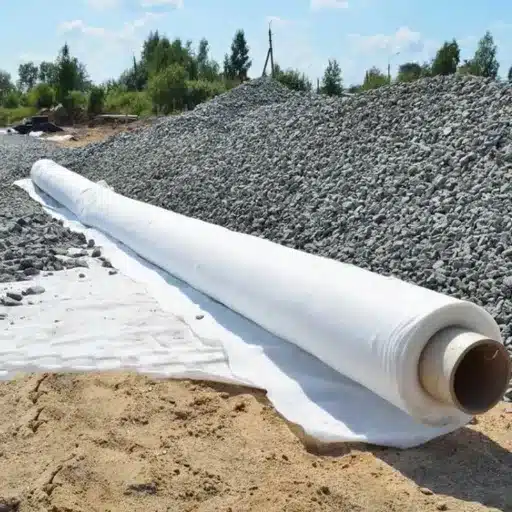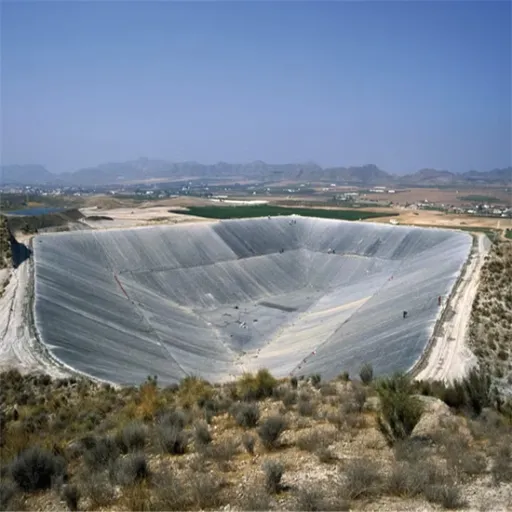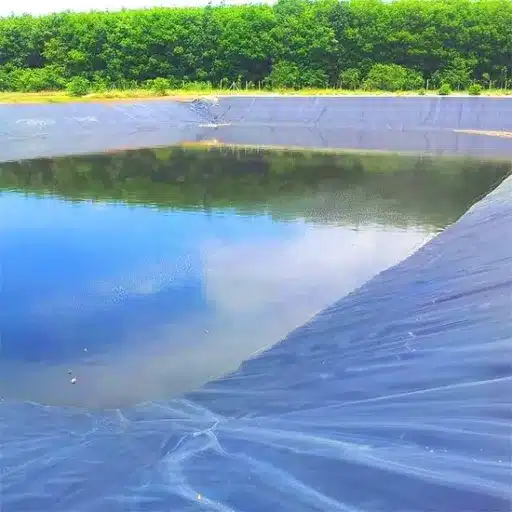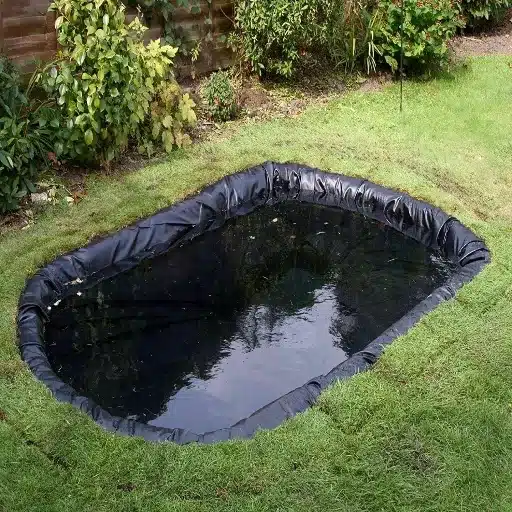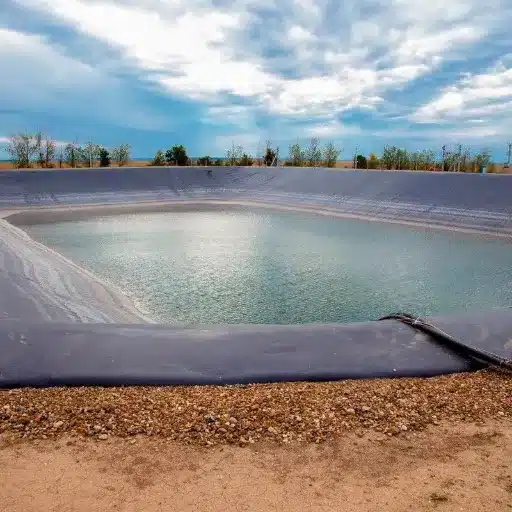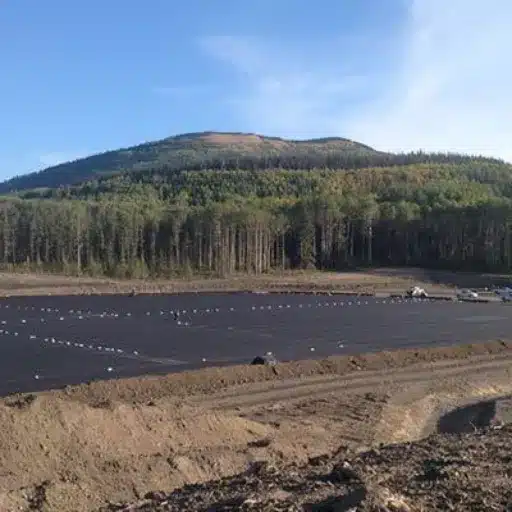Geotextile fabric is truly a jack-of-all-trades when it comes to drainage and soil erosion prevention. When your yard experiences water pooling, erosion threats to the slopes, or downright enhancing the life expectancy of your landscaping project, geos are those silent helpers that can pull through. This post shall entice you inside the world of geotextile fabric, pondering their uses, advantages, and their tools in the fight against some common landscaping dilemmas. By the end of this, you’ll surely have an inkling about how this revolutionary material can transform your outdoor space while protecting it for many years to come.
An Overview of Geotextile Fabrics
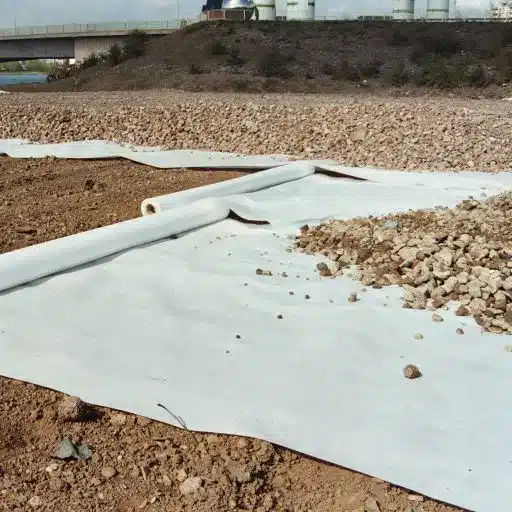
Geotextiles are adaptable materials that have many purposes in landscaping. They stabilize the soil, prevent erosion, and manage drainage while enhancing the durability of structures such as retaining walls and pathways. I assure you that by incorporating geotextiles into landscape designs, they can shield the outdoor space and increase its usability so that it stands for years.
What Are Geotextiles?
Geotextiles are permeable fabrics formed from synthetic or natural fibers, intended to be used within civil engineering, landscaping, and environmental projects. They have very diverse functions: filtration, separation, reinforcement, drainage, and erosion control. These fabrics are mostly manufactured as polypropylene or polyester, making them quite resistant and durable so that they do their work under the very worst environmental conditions.
Types of Geotextile Materials by Construction:
- Woven Geotextile Fabrics: Yarn interlacing imparts tremendous tensile strength to woven geotextiles, and hence, load-bearing applications such as road construction or slope stabilization are performed using them.
- Non-Woven Geotextiles: These fabrics are prepared by bonding fibers through mechanical, chemical, or heat means. Non-woven geotextiles are permeable; hence, they are mostly employed in filtration and drainage applications such as in drainage systems where clogging is to be prevented.
- Knitted Geotextiles: Yarns are knitted together to manufacture these geotextiles, which offer a good combination of flexibility and strength, allowing them to be used for a wide range of purposes.
Importance of Geotextile Fabrics in Construction
A specialty fabric found useful in all modern construction undertakings and implemented toward single or multifarious engineering or environmental purposes. These fabrics are mainly utilized for debated separation, filtration, reinforcement, drainage, and erosion control in construction works. In road construction, for instance, geotextiles are widely used to avoid a mixture of different soil layers, thus providing a stable base and extending the life span of the road. The findings reveal that geotextiles increase roadway durability by up to 50%, hence maintenance costs can be greatly reduced over time.
📊 Industry Insight: According to almost recent industry statistics, the market for geotextiles globally is projected to be worth $12.9 billion by 2028 due to the thrust given to sustainable infrastructure.
In water management, geotextiles assist in improving drainage systems; they allow water to pass through while sieving fine particles so that these fine materials do not clog the layers underneath and drainage pipes above. Their role is especially important in erosion control applications because they help stabilize soil mass on slopes, riverbanks, and coastal areas, thereby lessening the environmental harm due to construction activities.
The Role of Geotextile Fabrics in Waterproofing
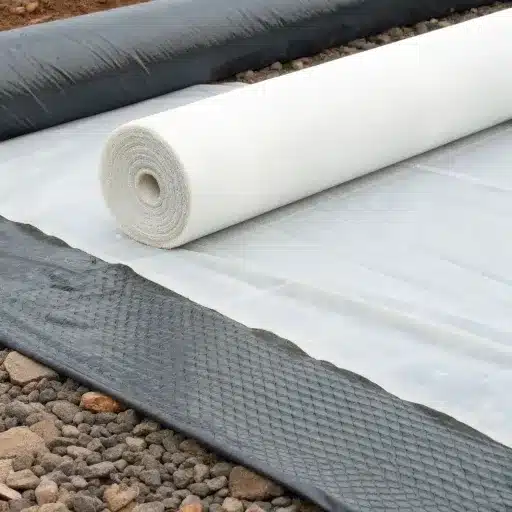
In the world of waterproofing, geotextiles are installed as protective barriers against water penetration. These fabrics promote drainage in the waterproofing system. They are relied on to produce a stable and durable waterproofing system, particularly wherein control over water flow is an issue of concern from the standpoint of structure protection and long-term integrity.
Understanding Waterproofing Mechanisms
Waterproofing is a very important step in building and landscaping so that water penetration does not lead to damage to the structure, erosion, or loss of function with time. Geotextile fabrics aid in origination of modern waterproofing mechanisms because, due to their special properties of permeability, durability, and resistance to adverse environmental conditions.
Among the major ways in which geotextiles waterproof a structure include their filtration and separation ability. One such case occurs in drainage systems wherein non-woven geotextiles permit water flow but obstruct the finer particles of soil, thus securing proper drainage and absence of clogging. Geotextiles may render drainage layers as much as 30% more efficient, thus improving the lifespan of construction projects.
How Geotextiles Aid Water Management
Use geotextiles in modern water management systems to refine filtration, drainage, and water retention mechanisms for a variety of applications. As these versatile materials prevent soil erosion and make free water flow, they are indispensable for such projects as stormwater management, agricultural drainage, and flood control. As per recent estimates, the global geotextile industry in 2022 witnessed the valuation of approximately $9 billion and will demonstrate huge growth, emphasizing their increased relevance in infrastructure and environmental management.
One of the prominent applications of geotextiles is in filtration systems. By creating a water-permeable barrier that traps the particles, they keep the drainage systems from clogging, enabling long-term performance. For example, woven geotextiles are used in riverbed stabilization and water conveyance structures. Non-woven geotextiles are, contrarily, contemplation in landfill sites management for leachates and protection of groundwater contamination.
Types of Geotextiles Available
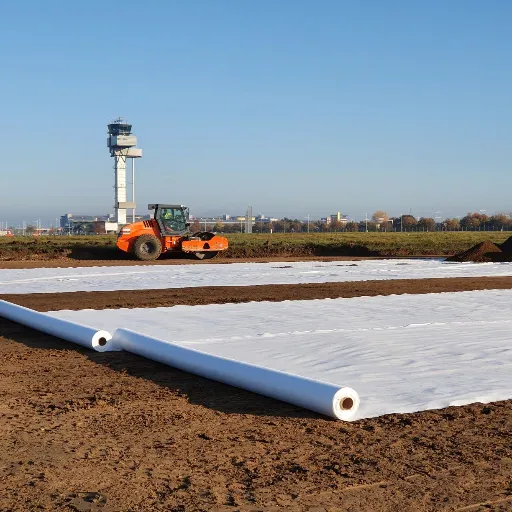
There are several types of geotextiles available, such as the woven, non-woven, and knitted varieties. Woven geotextiles are strong and durable and hence endowed with applications where great tensile strength is required, such as road construction. Non-woven geotextiles have another utility in filtration and drainage, being made of synthetic fibers.
Woven Geotextiles
In essence, woven geotextiles are manufactured by systematically interlacing synthetic materials, such as polypropylene or polyester, making a fabric with very good tensile strength, which is used in soil stabilization, erosion control, and the distribution of loads. Since woven geotextiles are inherently strong, they find particular use in applications that require high resistance to heavy loads, such as road construction or retaining walls.
📈 Technical Specifications:
Based on modern data, a woven geotextile can have tensile strength ranging between 50 kN/m and over 200 kN/m. This feature makes it good for the reinforcement of weak grounds, and along with it comes the increased longevity of structural works. They are designed with low permeability, giving them higher filtration and separation ability levels by letting no mixing of various soil layers through them while letting water through at a controlled rate. This thus ensures long-term stability in erosion-prone sites.
Nonwoven Geotextiles
Nonwoven geotextiles are unlike those which are woven in that they are created by bonding synthetic fibers with mechanical, chemical, or thermal processes instead of interlacing them. Besides these are the most diverse materials and are commonly used in construction for filtration, separation, drainage, and protection purposes. Their permeability, in particular, allows easy passage of water while blocking fine soil particles from moving through, which helps prevent soil erosion in different settings.
📊 Market Growth: According to recent data, nonwoven geotextiles account for a substantial portion of the global geotextile market. For instance, the market is projected to grow at a CAGR of around 5.8% from 2023 to 2030, reaching a valuation of over $11 billion by the end of the decade.
This growth is due to their increased use in infrastructure projects such as road construction, landfills, railways, and coastal defense. Their widespread use is due to their high tensile strength, durability, and cost efficiency.
Geotextiles and Their Benefits in Various Industries
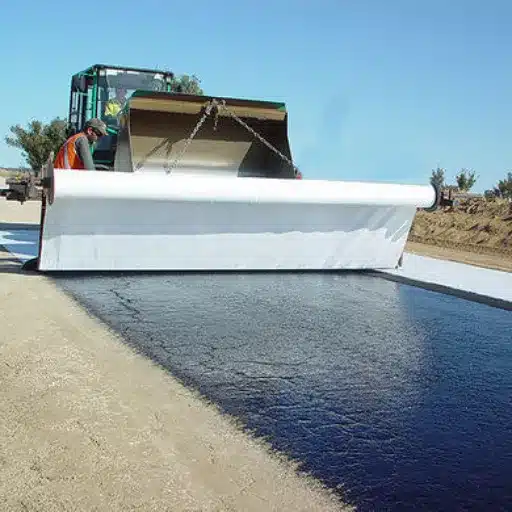
Geotextiles have some direct benefits in industries related to infrastructure and civil engineering projects. Infrastructure enhancement, soil stabilization, and drainage are all areas of expertise for the application of geotextiles. They find many applications in the construction of roads, erosion control, and landfills-wrong placement of which could lead to expensive maintenance.
Constructional Applications
Nonwoven geotextiles are important for providing remedies for sustainability, durability, and efficiency in the construction industry. These materials, therefore, find application in probably everything: building roads, foundation reinforcement, erosion protection, and drainage. Separately, a good use of geotextiles, in roadway construction, is separation to keep the soil from intermixing so as to ensure the long-term stability of the structure. According to markets including MarketsandMarkets, it is expected that the industry of geotextile will generate $13.1 billion by 2027, which really blows $8.9 billion out of the water, with an increase in use among major infrastructure development projects being the chief factor for this.
Nonwoven geotextiles act as a filter barrier, while the barrier action provides protection against erosion. These products thus ensure soil stabilization and organize water movement on the slope, thereby minimizing landslides and erosion. Also, drainage systems involve the use of geotextiles, where their permeability raises water flow rates so that materials do not clog it. Recent data hence affirm that geotextile installation projects extend infrastructure life span by 25% at the minus of maintenance cost and environmental impact.
Landscaping Solutions with Geotextiles
Geotextiles are a modern landscaping solution that circumvents problems posed by different issues. Being versatile, they find their use in almost every purpose of soil stabilization, erosion control, or drainage in landscaping projects. Geotextiles are essentially barrier fabrics against which soils are protected from the erosive impact of rainfall and aid in water filtration through the soil medium in keeping gardens, parks, and various other green areas healthy.
🏗️ Enhanced Structural Integrity:
This meaning soil stabilization and structural integrity is further maintained by geotextiles in retaining wall systems in landscaping. Geotextile-reinforced retaining walls can bear loads that are 50% greater than walls that have no such reinforcement of their own, thereby describing a much longer life span. Furthermore, they are also used underneath pathways and walkways to prevent soil shifting, guaranteeing a solid walking surface for pedestrians.
Practical Tips for Using Geotextile Fabrics
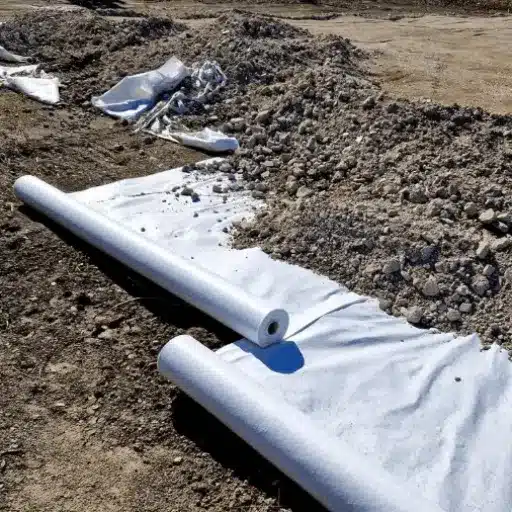
Best Practices for Installing Geotextile Fabrics
1. Site Preparation
Clear the location of anything such as debris, stones, and unwanted vegetation. The surface must be flat and properly compacted for the geotextile fabric to lie evenly and fulfill its purpose. When placed on uneven surfaces, it becomes less effective in filtering or preventing erosion.
2. Choose the Appropriate Overlap
When laying multiple pieces of geotextile fabric, an overlap is essential. Generally, 12-18 inches (30-45 cm) is recommended, although the exact amount of overlap depends on the slope and soil stability. With a steeper slope or more stress on the fabric, one may want to use larger overlaps, or possibly anchor the fabric.
3. Anchor the Fabric
Continuously anchoring the fabric with stakes, pins, or heavy materials is desirable; any drifting alteration during installation or prior environmental conditions like heavy winds or strong flow of water could compromise the system if left to its own devices. Provisions need to be made for a stable anchoring system to ensure proper performance.
Maintenance and Long Life for Geotextile Fabric
✓ Regular Inspecting
Periodic and random checks for the visual inspection to detect any wear, damage, clogging, etc. Inspection data obtained from recent surveys describe that routine maintenance can increase the life span of geotextile fabrics by 20%.
✓ Prevent Clogging
Drainage systems connected to a geotextile must be checked for debris and sediment accumulations. Clogged drains mean reduced permeability and reduced functionality. The risk can be lessened by using a filter layer of proper design.
✓ Minimize UV Exposure
A modern geotextile fabric is often UV-stabilized; the manufacturer, though, cannot promise that damage will never occur if prolonged exposure to sunlight is sustained. Covering the fabrics while being stored or during installation thus considerably increases their durability.
Frequently Asked Questions (FAQs)
❓ What are the different types of geotextiles used for waterproofing?
Basically, two types of geotextiles can be used for waterproofing: woven and non-woven. Woven geotextiles are made by interlacing fibers, giving them high tensile strength, whereas the non-wovens are needle-punched fibers randomly arranged, thus providing for better filtration and flexibility in terms of application.
❓ How does non-woven geotextile fabric work for drainage?
Non-woven geotextile fabric works efficiently in drainage operations since it can hold the fine particles while allowing water to go through. This leads to the separation of soil and thus prevents clogging of the system while maintaining a satisfactory water flow rate. The fabric is also dimensionally stable and puncture-resistant, thus useful in most engineering designs where drainage is a big consideration.
❓ Does slope protection stand for anything in geotextiles?
A great role is played by geotextiles in the protection of slopes through soil stabilization and prevention of erosion. Heavy-duty geotextiles are usually preferred to withstand natural forces acting against the slope. They maintain the integrity of embankments and stop soil movement to give the longevity to slopes in construction work.
❓ How do geotextiles strengthen soil?
Geotextiles provide ground stabilization through the reinforcement of weak soils, consequently increasing their load capacity and creating a more stable foundation for structures. They are manufactured to sustain varied construction activities, from supporting bridge abutments to roadways, by spreading loads and precluding soil deformations.
❓ What are the common materials for manufacturing geotextiles?
Besides soils, geotextiles are manufactured from synthetic fibers such as polypropylene and polyester. These materials were chosen because of the extreme tensile strength capacity, the durability capacity, and in resistance to any other environmental factors. All qualities that derive their applications in any heavy-duty works requiring longevity and performance issues.
Reference Sources
-
KTTL Blog: Geotextile Fabric for Waterproofing
This source discusses the benefits and applications of geotextile fabrics in waterproofing, including their use in roofing, underlayment, wall wraps, and foundation wrapping.
Source Link -
EJ Prescott Blog: The Importance of Selecting and Using the Correct Geotextile Fabric
This article highlights the growing market and applications of geotextile fabrics, emphasizing their role in soil separation, drainage, and waterproofing in construction projects.
Source Link -
TexDelta Blog: Geotextile Fabric – Uses and Applications
This blog provides insights into the types of geotextile fabrics (woven and non-woven) and their specific applications in waterproofing, erosion control, and construction.
Source Link

